5 Reasons Call Center Metrics Drive Growth
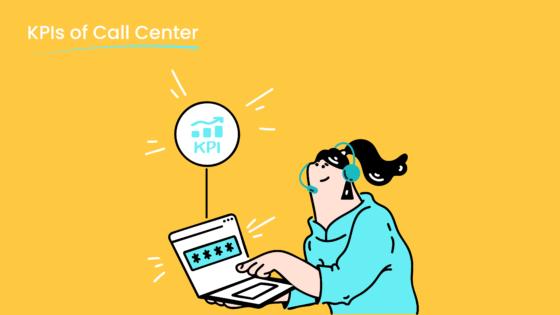
Tracking call center metrics is essential for improving customer satisfaction and operational efficiency. These metrics, such as Customer Satisfaction Scores (CSAT) and First Call Resolution (FCR), provide actionable insights. For instance, a high FCR rate—like 75%—means most issues are resolved in one interaction, reducing follow-ups and enhancing customer experience. Companies like T-Mobile boosted FCR by 15% through better agent tools, while American Express achieved over 90% FCR by empowering their teams.
Measuring key performance indicators like service level rates also ensures responsiveness. For example, answering 80% of calls within 20 seconds directly impacts customer satisfaction. Tools like Sobot's call center solutions simplify tracking these metrics, helping businesses optimize performance and stay competitive.
Improve Customer Satisfaction with Call Center Metrics
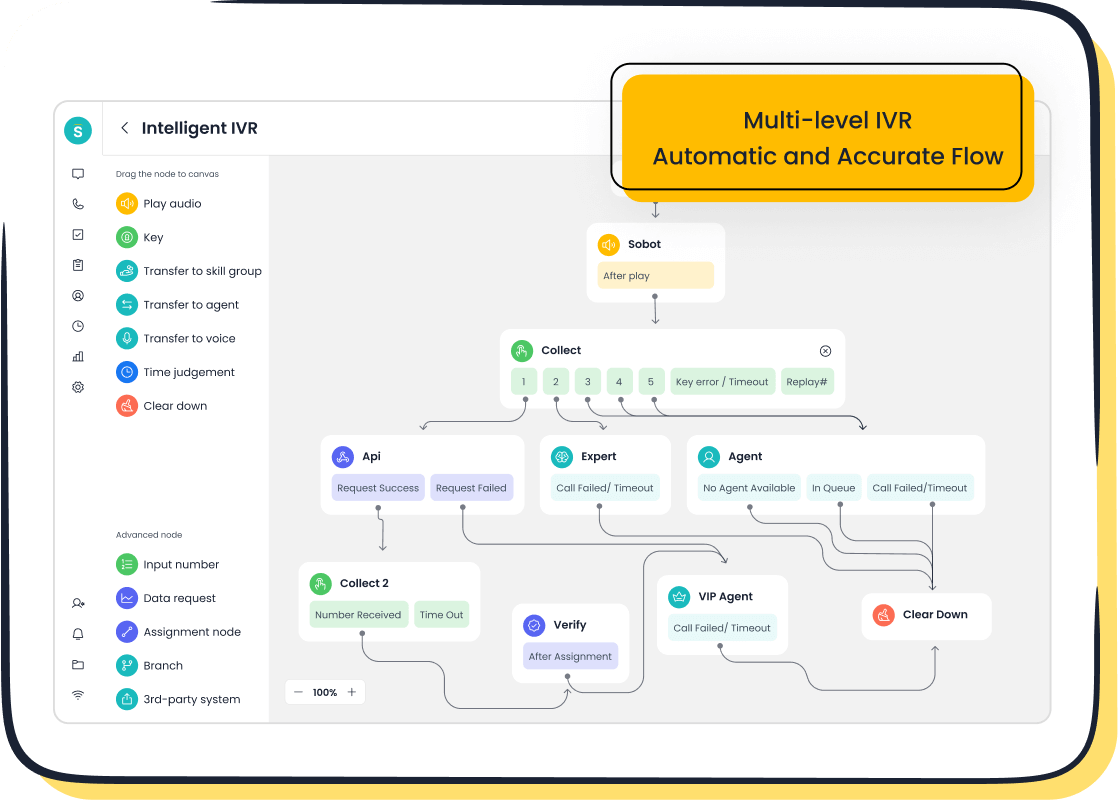
The Role of First Call Resolution (FCR) in Customer Experience
First call resolution plays a critical role in shaping the customer experience. When you resolve issues during the first interaction, customers feel valued and supported. Studies show that improving FCR can enhance customer satisfaction in 90% of cases. For example, a bank implemented agent training and set performance goals to improve FCR. Over eight months, both FCR and customer satisfaction increased significantly. This demonstrates how focusing on this metric can transform your call center operations.
| Statistic | Description |
|---|---|
| 90% | Customers dissatisfied due to lack of FCR |
| 40% | Customers defecting due to lack of FCR |
| Positive impact areas | Reduces costs, improves satisfaction, and retention |
Even a 1% increase in FCR corresponds to a 1% rise in customer satisfaction. By prioritizing FCR, you can reduce follow-up calls, lower operational costs, and build stronger customer relationships.
How Average Handle Time (AHT) Impacts Satisfaction
Average handle time is another key call center metric that directly affects customer satisfaction. A shorter AHT means faster resolutions, which customers appreciate. However, focusing solely on speed can compromise quality. Striking the right balance is essential. For instance, using tools like Sobot's AI-powered Voicebot can streamline processes, allowing agents to focus on delivering quality service while maintaining efficiency.
When you monitor AHT, you gain insights into how well your team manages time. This helps identify areas for improvement, such as training needs or workflow adjustments. Optimizing AHT ensures customers receive timely and effective support, enhancing their overall experience.
Leveraging Customer Satisfaction Scores (CSAT) for Growth
Customer satisfaction scores are vital for measuring and driving growth. CSAT evaluates how satisfied customers are with specific interactions. High scores indicate that your call center is meeting customer expectations. Metrics like CSAT also correlate directly with customer retention and revenue growth.
| Metric | Description | Impact on Growth |
|---|---|---|
| NPS | Measures loyalty and likelihood to recommend | Predicts churn and identifies loyal customers |
| CSAT | Assesses satisfaction with interactions | Correlates with retention and revenue |
| CES | Evaluates ease of interactions | Optimizes processes for better experience |
By collecting customer feedback through CSAT surveys, you can identify strengths and weaknesses in your service. This data allows you to make informed decisions, improve processes, and foster long-term customer loyalty.
Sobot's Voice/Call Center: Enhancing Customer Satisfaction Metrics
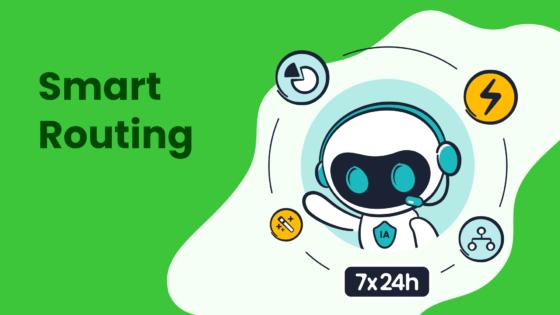
Sobot's Voice/Call Center provides powerful tools to help you improve customer satisfaction metrics. Its advanced features, such as intelligent IVR and AI-powered Voicebot, ensure that your customers receive fast and accurate support. These tools reduce wait times and improve the quality of interactions, which directly impacts customer happiness.
One of the key benefits of Sobot's Voice/Call Center is its ability to streamline communication. The unified workspace allows your agents to manage calls and customer information in one place. This reduces the time spent switching between systems and ensures that agents can focus on resolving issues effectively. For example, Sobot's platform supports multilingual templates and time zone settings, enabling your team to provide personalized service to customers worldwide.
The impact of Sobot's Voice/Call Center on customer satisfaction is evident in the following metrics:
| Metric Description | Value |
|---|---|
| Reduction in Inbound Discussion Volume | 20% |
| Positive Feedback Rate | 96%+ |
| Correct Answers Provided | 80%+ |
| Customer Satisfaction Score (CSAT) | 97% |
| Problem Resolution Rate | 85% |
| Customer Happiness Rate | 99% |
These numbers highlight how Sobot's solutions enhance customer experiences. For instance, a 97% CSAT score reflects how well the system meets customer expectations. The 85% problem resolution rate shows that most issues are resolved quickly, reducing the need for follow-up calls.
By using Sobot's Voice/Call Center, you can also leverage real-time monitoring and analytics. These tools help you track performance and identify areas for improvement. With features like smart call routing and AI-powered assistance, your team can handle inquiries more efficiently, leading to higher satisfaction rates.
Sobot's commitment to innovation and customer-centricity ensures that your business stays ahead. Its solutions not only improve customer satisfaction metrics but also build trust and loyalty, driving long-term growth.
Enhance Operational Efficiency Through Metrics
Reducing Call Abandonment Rates for Better Service
Call abandonment rates are a critical metric for evaluating your call center's performance. A high abandonment rate often signals long wait times or inefficient processes, which can frustrate customers and harm your brand's reputation. By focusing on reducing this rate, you can significantly enhance the customer experience and improve service quality.
Studies show that well-performing call centers maintain abandonment rates between 3% and 5%, with top-performing centers achieving rates closer to 3%. Lowering this rate not only reflects better operational efficiency but also builds customer trust. For example, shorter wait times and effective call routing can encourage customers to stay on the line, leading to higher satisfaction and loyalty.
Key metrics like the Average Speed of Answer (ASA) and Service Level can help you monitor and address abandonment rates. Tools like Sobot's intelligent IVR and smart call routing ensure that calls are directed to the right agents quickly, minimizing wait times and reducing the likelihood of abandonment.
Optimizing Agent Utilization with Real-Time Data
Efficient agent utilization is essential for maintaining a productive call center. Real-time data allows you to monitor agent performance and allocate resources effectively. Companies like USAA have achieved an 85% utilization rate by leveraging real-time insights without compromising employee well-being. Similarly, Salesforce improved utilization by 15% through AI-powered forecasting and scheduling.
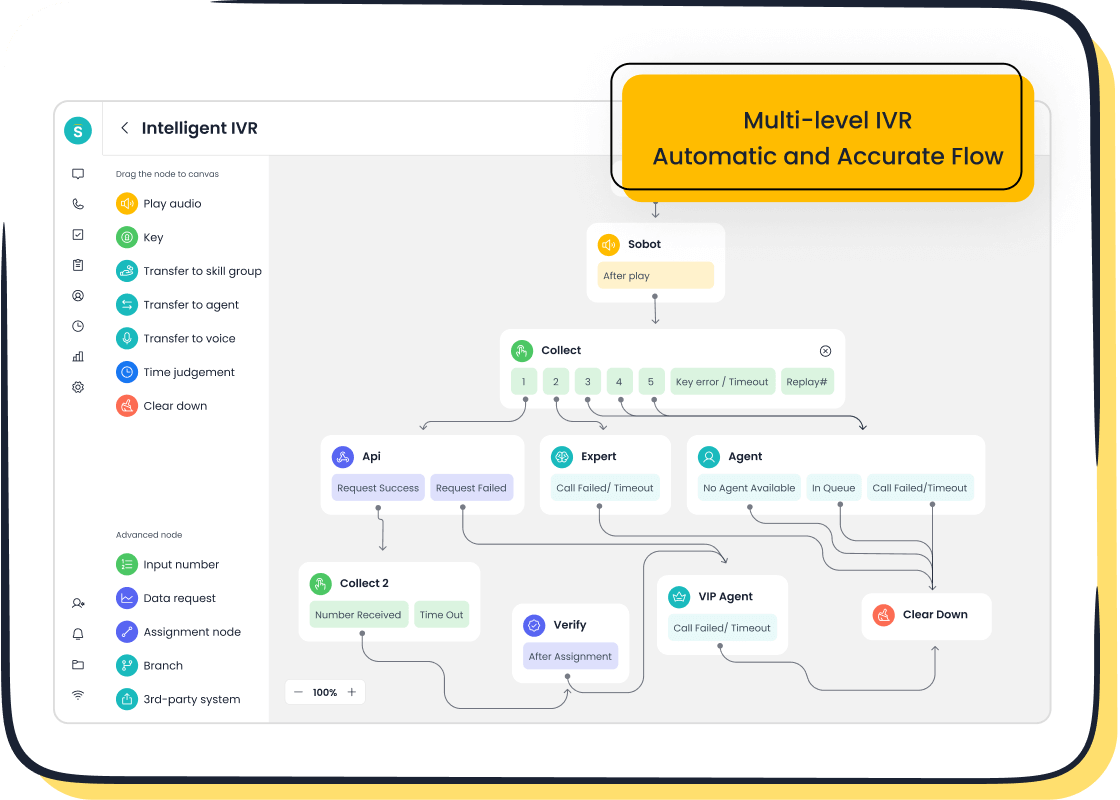
Tracking metrics such as Average Handle Time (AHT) and Cost Per Call (CPC) can help you identify areas where agents may need additional training or support. Sobot's unified workspace provides agents with all the tools they need to manage calls efficiently, reducing downtime and improving overall productivity. By optimizing agent utilization, you can handle more calls without increasing costs, ensuring a seamless customer experience.
Evaluating Call Queue Times to Improve Efficiency
Call queue times directly impact both customer satisfaction and operational efficiency. Long wait times can lead to higher abandonment rates and lower retention. Metrics like ASA and abandonment rates provide valuable insights into how well your call center manages queues. For instance, a lower ASA often correlates with improved customer satisfaction scores.
Shorter queue times also contribute to better conversion rates and higher average order values. Customers who receive prompt responses are more likely to complete purchases and leave positive feedback. Sobot's AI-powered Voicebot and smart call routing features help reduce queue times by automating routine inquiries and directing complex issues to the right agents. This ensures that your team can focus on delivering quality service while maintaining efficiency.
By continuously monitoring and optimizing call queue times, you can create a smoother customer journey and drive long-term growth for your business.
Sobot's Unified Workspace: Streamlining Operations
Sobot's Unified Workspace simplifies your call center operations by consolidating tools, data, and communication channels into one platform. This integration eliminates the need for switching between systems, saving time and boosting efficiency. When your agents work in a unified environment, they can focus on delivering exceptional service instead of navigating complex workflows.
The impact of Sobot's Unified Workspace is evident in real-world results. For example, the City of Mesa modernized its contact centers using an omnichannel system. This upgrade reduced maintenance costs by 40%, demonstrating how streamlined operations can lead to significant savings. By unifying tools and processes, you can achieve similar results, cutting expenses while improving service quality.
Sobot's platform offers features designed to optimize your operations. The unified workspace provides agents with instant access to customer data, call histories, and communication records. This centralized approach ensures faster resolutions and fewer errors. With tools like real-time monitoring and analytics, you can track performance and identify areas for improvement. These insights help you make informed decisions that drive growth.
💡 Tip: Use Sobot's smart call routing to connect customers with the right agents instantly. This reduces wait times and enhances satisfaction.
Sobot's Unified Workspace also supports multilingual templates and time zone settings. These features enable your team to serve customers worldwide with ease. Whether you're handling inquiries in retail, financial services, or gaming, Sobot's solutions adapt to your needs. By streamlining operations, you can improve productivity, reduce costs, and deliver a seamless customer experience.
Explore how Sobot's Unified Workspace can transform your call center. With its innovative tools and customer-centric design, you can stay ahead in a competitive market. Learn more about Sobot's solutions here.
Boost Revenue and Sales Opportunities
Identifying Upselling and Cross-Selling Trends
Call center metrics can help you uncover valuable upselling and cross-selling opportunities. By analyzing customer interactions, you can identify patterns in purchasing behavior and tailor your offerings to meet customer needs. For example, selling products to existing customers is 60%-70% more likely to succeed than selling to new ones. Additionally, 72% of salespeople report revenue growth due to these strategies, which can result in 42% more revenue overall.
Brands that implement cross-selling tactics often see a 20% increase in profit. Moreover, 89% of customer experience professionals emphasize the importance of empowering agents to upsell and cross-sell effectively. With tools like Sobot's AI-powered Voicebot, you can equip your team with the insights needed to recommend relevant products or services, boosting both customer satisfaction and revenue.
Tracking Conversion Rates for Better ROI
Tracking conversion rates is essential for evaluating the return on investment (ROI) of your call center operations. Metrics such as form conversions, call-to-action (CTA) conversions, and website conversion rates provide a clear picture of how well your strategies are working. For instance:
| Conversion Type | Description |
|---|---|
| Form conversions | Measures how many users fill out and submit forms, indicating user engagement and interest. |
| CTA conversions | Tracks the percentage of users clicking on calls to action, assessing the effectiveness of CTAs. |
| Micro conversions | Looks at interactions with web page elements, showing how engaging the content is. |
| Website conversion rates | Overall percentage of website visitors who become customers, indicating the site's sales effectiveness. |
By monitoring these metrics, you can refine your approach to maximize ROI. Sobot's call center solutions provide real-time analytics, enabling you to track and improve these conversion rates effectively.
Monitoring Customer Retention Metrics to Drive Loyalty
Customer retention metrics play a crucial role in fostering loyalty. Metrics like Customer Retention Rate (CRR), Repeat Purchase Rate (RPR), and Net Promoter Score (NPS) help you understand how well your call center meets customer expectations. For example:
| Metric | Description |
|---|---|
| Customer Retention Rate (CRR) | Measures the percentage of customers retained over a specific period, indicating loyalty. |
| Repeat Purchase Rate (RPR) | Tracks how often customers return to make additional purchases, reflecting satisfaction. |
| Net Promoter Score (NPS) | Gauges customer satisfaction and likelihood to recommend, linking to loyalty. |
Positive interactions with your call center create a cycle of trust and satisfaction, encouraging customers to return. By leveraging these metrics, you can identify areas for improvement and tailor your services to build long-term relationships. Sobot's unified workspace simplifies this process by consolidating data, helping you deliver a seamless customer experience.

How Sobot's AI-Powered Voicebot Supports Revenue Growth
Sobot's AI-powered Voicebot transforms your call center into a revenue-generating powerhouse. By automating routine tasks and enhancing customer interactions, it helps you uncover new sales opportunities while improving efficiency.
The Voicebot uses advanced AI to recognize customer intent and provide personalized responses. For example, when a customer inquires about a product, the Voicebot can suggest complementary items or upgrades. This proactive approach increases upselling and cross-selling opportunities. Studies show that upselling to existing customers is 60%-70% more effective than acquiring new ones. With Sobot's Voicebot, you can capitalize on this potential effortlessly.
💡 Did you know? Businesses using AI-powered tools like Sobot's Voicebot report a 20% increase in sales conversions.
Real-time analytics is another powerful feature of Sobot's Voicebot. It tracks customer interactions and identifies trends, helping you refine your sales strategies. For instance, if the data shows a high demand for a specific product, you can adjust your offerings to meet customer needs. This data-driven approach ensures you stay ahead of market trends.
Sobot's Voicebot also reduces operational costs. By handling repetitive queries, it frees up your agents to focus on high-value tasks like closing sales. This not only boosts productivity but also enhances the customer experience. A satisfied customer is more likely to make repeat purchases, driving long-term revenue growth.
With Sobot's AI-powered Voicebot, you gain a competitive edge. Its intelligent features, such as intent recognition and real-time analytics, empower your team to deliver exceptional service while maximizing revenue. Learn more about how Sobot can transform your call center here.
Strengthen Employee Performance with Data Insights
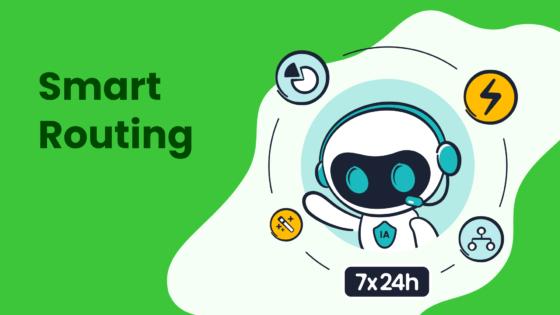
Using Agent Performance Metrics to Drive Accountability
Agent performance metrics provide a clear picture of how well your team is performing. These metrics help you hold agents accountable by offering measurable data. For example, tracking First Call Resolution (FCR) shows how effectively agents resolve issues on the first attempt. Similarly, Average Handle Time (AHT) highlights efficiency, while Customer Satisfaction Scores (CSAT) reflect service quality.
| Metric | Impact on Employee Performance |
|---|---|
| First Call Resolution (FCR) | Enhances customer experience and shows agents' skills |
| Average Handle Time (AHT) | Affects efficiency and operational costs |
| Customer Satisfaction Score (CSAT) | Reflects service quality and employee effectiveness |
| Quality Score | Directly linked to agent performance and customer experience |
Using these metrics ensures fair evaluations. Standardized evaluation forms and performance tracking tools allow you to monitor improvements over time. This approach builds accountability and motivates agents to meet performance goals.
| Evidence Type | Description |
|---|---|
| Clear Evaluation Data | Recordings provide concrete evidence of agent performance for fair assessments |
| Standardized Evaluation Forms | These forms ensure consistent assessment across key metrics, leading to fair evaluations. |
| Performance Tracking | Monitoring improvements over time helps guide training and ensures accountability among staff. |
Providing Targeted Training Based on Performance Data
Performance data helps you identify areas where agents need improvement. For instance, if FCR rates are low, agents may lack the tools or knowledge to resolve issues effectively. Training programs tailored to these gaps can lead to measurable improvements. Studies show that targeted training reduces AHT and increases CSAT scores.
| Metric | Impact of Training |
|---|---|
| First Call Resolution (FCR) | 60% of unsuccessful resolutions due to lack of tools |
| Average Handle Time (AHT) | Decrease in handle times post-training |
| Customer Satisfaction (CSAT) | Higher ratings linked to improved agent skills |
| Agent Retention Rate | Enhanced retention through effective training |
By focusing on specific metrics, you can design training sessions that address weaknesses. This approach not only improves individual performance but also boosts team productivity.
Recognizing Top Performers to Motivate Teams
Recognizing top performers is a simple yet powerful way to motivate your team. Publicly sharing achievements during team meetings highlights their contributions and inspires others to excel. Weekly recognition can improve work quality by 24% and reduce absenteeism by 27%. It also lowers staff shrinkage by 10%, creating a more engaged workforce.
- Public recognition boosts morale and encourages healthy competition.
- Gallup research shows that frequent recognition enhances productivity and reduces turnover.
- Celebrating achievements improves overall call center efficiency.
When you acknowledge top performers, you create a positive work environment. This strategy fosters motivation and drives better results across your team.
Sobot's Monitoring and Analysis Tools for Employee Success
Sobot's monitoring and analysis tools empower you to elevate employee performance by providing actionable insights. These tools track key call center metrics, such as First Call Resolution (FCR), Average Handle Time (AHT), and Customer Satisfaction Scores (CSAT). By analyzing this data, you can identify performance gaps and implement strategies to address them effectively.
One standout feature is real-time monitoring, which allows you to oversee agent activities as they happen. For example, you can track call durations, resolution rates, and customer feedback in real-time. This immediate visibility helps you intervene when necessary, ensuring consistent service quality. Studies show that real-time feedback improves employee performance by up to 20%, as agents can adjust their approach instantly.
Sobot also offers customizable dashboards that consolidate performance data into a single view. These dashboards simplify the process of evaluating individual and team performance. For instance, you can compare metrics like AHT and CSAT across agents to identify top performers and those needing additional support. This data-driven approach fosters accountability and encourages continuous improvement.
💡 Tip: Use Sobot's analytics to set clear performance benchmarks. Agents perform better when they understand expectations and receive regular feedback.
Another valuable tool is call recording and transcription, which provides a detailed record of customer interactions. Reviewing these recordings helps you pinpoint areas for improvement, such as communication skills or product knowledge. This feature also supports targeted training programs, ensuring your team develops the skills needed for success.
Sobot's monitoring and analysis tools not only enhance employee performance but also contribute to overall operational efficiency. By leveraging these insights, you can create a motivated, high-performing team that delivers exceptional customer experiences. Learn more about Sobot's solutions here.
Make Data-Driven Decisions for Strategic Growth
Leveraging Real-Time Analytics for Immediate Action
Real-time analytics empower you to make quick and effective decisions. These tools provide instant insights into your call center's performance, enabling you to address issues as they arise. For example, monitoring customer sentiment during live interactions allows you to detect dissatisfaction and take corrective action immediately. This approach improves customer satisfaction and prevents problems from escalating.
| Benefit | Description |
|---|---|
| Improved Decision-making | Real-time analytics provide actionable insights for quick, data-driven decisions. |
| Increased Agent Productivity | Monitoring agents in real-time helps identify and address issues, enhancing productivity. |
| Enhanced Customer Satisfaction | Immediate detection of customer sentiment allows for faster problem resolution and better service. |
| Faster Issue Resolution | Real-time detection of issues enables swift action to minimize service disruptions. |
Supervisors can also use real-time data to support agents during calls. For instance, if an agent struggles with a complex issue, supervisors can step in to provide guidance. This not only boosts team performance but also ensures customers receive the best possible service. Real-time dashboards further promote accountability by encouraging agents to monitor their own performance and make improvements.
Predicting Trends with Historical Data
Historical data offers valuable insights into your call center's operations. By analyzing past trends, you can predict future challenges and opportunities. For example, AI tools can analyze call volume patterns to help you plan staffing levels more effectively. This ensures you have the right number of agents available during peak times, reducing wait times and improving customer satisfaction.
| Aspect | Evidence |
|---|---|
| Agent Behavior | Historical data analysis identifies behaviors leading to high customer satisfaction. |
| Call Volume Prediction | AI predicts shifts in call volumes for better staff planning and resource allocation. |
| Training Strategies | Analysis of past calls informs targeted training strategies based on resolution time and tone. |
Predictive analytics also help you identify reasons for poor customer engagement. By monitoring past interactions, you can spot recurring issues and address them before they escalate. For example, if data shows that certain call types often lead to dissatisfaction, you can adjust your training programs to prepare agents for these scenarios.
- Forecast agent performance based on historical data.
- Identify training needs for agents.
- Match agents with calls where they are likely to succeed.
Aligning Metrics with Business Goals for Long-Term Success
Aligning your call center metrics with business goals ensures sustainable growth. Metrics like First Call Resolution (FCR) and Customer Satisfaction Scores (CSAT) directly impact your company's success. For example, improving FCR reduces operational costs and enhances customer loyalty, both of which contribute to long-term profitability.
To align metrics with your goals, start by identifying key performance indicators (KPIs) that reflect your objectives. For instance, if your goal is to increase customer retention, focus on metrics like Net Promoter Score (NPS) and Repeat Purchase Rate (RPR). These metrics provide actionable insights into how well your call center meets customer expectations.
Pro Tip: Use tools like Sobot's real-time analytics to track these metrics and adjust your strategies as needed. This ensures your call center remains aligned with your business objectives, driving both short-term results and long-term growth.
By leveraging data-driven insights, you can make informed decisions that support your company's vision. This approach not only improves call center performance but also strengthens your overall business strategy.
Sobot's Call Tracking Features: A Game-Changer for Decision-Making
Call tracking is more than just monitoring calls; it’s about unlocking actionable insights to drive your business forward. Sobot’s call tracking features provide you with the tools to analyze customer interactions, identify trends, and make informed decisions that align with your goals.
One standout feature is real-time call data analysis, which allows you to monitor key metrics like call duration, resolution rates, and customer sentiment as they happen. For example, if you notice a spike in unresolved calls, you can immediately adjust staffing or provide additional support to agents. This proactive approach ensures smoother operations and happier customers.
💡 Did you know? Businesses using real-time analytics report a 20% improvement in operational efficiency.
Sobot’s call tracking also excels in trend analysis. By examining historical data, you can identify patterns in customer behavior, such as peak call times or recurring issues. This helps you allocate resources effectively and refine your strategies. For instance, a retail company used Sobot’s analytics to predict a 30% increase in calls during holiday sales, enabling them to prepare their team and reduce wait times.
| Feature | Benefit |
|---|---|
| Real-Time Monitoring | Immediate insights for quick decision-making |
| Historical Data Analysis | Identifies trends to optimize resource allocation |
| Integration with CRM Systems | Consolidates data for a comprehensive view of customer interactions |
Sobot’s seamless integration with CRM systems enhances decision-making further. By unifying call data with customer profiles, you gain a 360-degree view of interactions. This enables personalized service and strengthens customer relationships.
With Sobot’s call tracking, you don’t just track calls—you transform them into opportunities for growth. Learn more about how Sobot can revolutionize your decision-making process here.
Call center metrics play a vital role in driving business growth. They improve customer satisfaction, streamline operations, and enhance employee performance. Companies that prioritize these metrics often see measurable success. For example:
- Taylor & Hart doubled their revenue by focusing on Net Promoter Score (NPS) and converting one-time buyers into loyal customers.
- Cox Communications reduced customer churn by implementing a Voice of the Customer (VoC) program, linking customer feedback to retention.
Sobot's Voice/Call Center solutions provide the tools you need to track and optimize these metrics effectively. With features like real-time analytics, intelligent IVR, and AI-powered Voicebot, Sobot empowers you to make data-driven decisions, seize revenue opportunities, and maintain a competitive edge. By leveraging these solutions, you can ensure long-term success in a competitive market.
FAQ
1. Why are call center metrics important for business growth?
Call center metrics help you measure performance, identify inefficiencies, and improve customer satisfaction. Metrics like First Call Resolution (FCR) and Average Handle Time (AHT) provide actionable insights. These insights allow you to optimize operations, enhance customer loyalty, and increase revenue.
2. How does Sobot's Voice/Call Center improve customer satisfaction?
Sobot's Voice/Call Center uses intelligent IVR, AI-powered Voicebot, and smart call routing to reduce wait times and resolve issues faster. Its unified workspace ensures agents have all the tools they need to deliver personalized and efficient service, boosting customer satisfaction.
💡 Tip: Use Sobot's real-time analytics to track and improve satisfaction scores.
3. What metrics should I track to improve agent performance?
Focus on metrics like First Call Resolution (FCR), Average Handle Time (AHT), and Customer Satisfaction Scores (CSAT). These metrics highlight areas where agents excel or need improvement. Sobot's monitoring tools provide real-time data to help you guide your team effectively.
4. Can Sobot's solutions integrate with my existing systems?
Yes, Sobot's solutions integrate seamlessly with CRM systems like Salesforce and Shopify. This integration consolidates customer data, enabling a 360-degree view of interactions. It simplifies workflows and enhances both agent productivity and customer experience.
5. How does Sobot ensure system reliability?
Sobot guarantees 99.99% system uptime with global network support. Its platform uses encrypted data transfer and scalable infrastructure to ensure secure and reliable operations. This stability allows you to focus on delivering exceptional service without disruptions.
🔒 Note: Sobot's system stability ensures uninterrupted communication, even during peak times.
See Also
Enhancing Call Center Efficiency Through Effective Monitoring Techniques
Essential Features to Look for in CRM Call Center Software
Best Call Center Analytics Tools to Use in 2024
Effective Strategies for Quality Management in Call Centers
Comprehensive Review of Leading Contact Center Solutions for 2024
